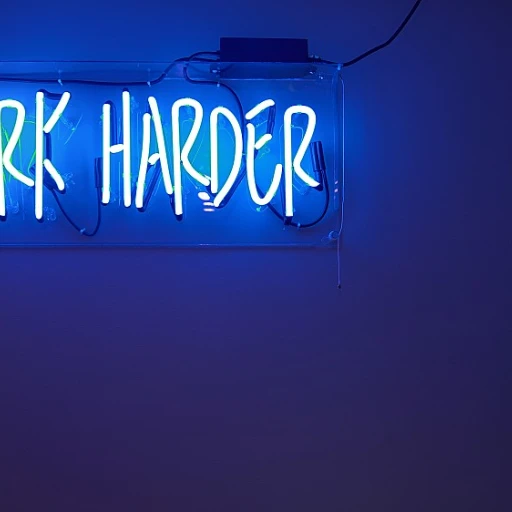
Understanding Outboarding in HR
Exploring the Concept of Creating Seamless Transitions
The journey within a company does not end at onboarding; indeed, it extends through the entire employee life cycle, which eventually includes outboarding. But what exactly is outboarding? In essence, it's the process of ensuring that an employee's exit from the organization is as smooth and structured as their entry. Often placed alongside offboarding, outboarding is critical in maintaining a high-quality employee experience even at the close of their journey. Outboarding provides a framework for departing employees, ensuring they leave on a positive note. This process can involve exit interviews, knowledge transfer sessions, and even participation in farewell events. These components help not just the departing employee but also the company and the remaining employees. Understanding both the emotional and logistical aspects of this phase is essential in the world of human resources. The HR industry recognizes that the employee journey does not just influence the individual's experience but also reflects on the company's reputation. A well-conducted outboarding process can lead to strong endorsements for the company and potentially even boomerang employees—those who might return in the future. Therefore, mastering the art of outboarding should be a priority for HR professionals and business leaders alike. To further enhance your grasp on human resource dynamics and how professionalism intertwines with these processes, consider visiting mastering professionalism in HR job interviews. This resource will deepen your understanding of effectively managing the employee life cycle from start to finish.The Importance of Outboarding
Why Prioritizing Outboarding Matters for Companies
For companies looking to optimize their human resources strategies, understanding the significance of outboarding is crucial. As much as onboarding sets the stage for new employees, outboarding plays an equally vital role in the employee journey. In industries where recruitment is competitive, the way a company handles the departure of an employee can greatly impact its reputation and attractiveness to prospective job candidates. Outboarding not only helps in managing the transition of departing employees but also ensures that former employees leave with a positive experience. This process is about maintaining relationships and ensuring that all parties feel valued, even as the professional journey diverges. Events and training development are integral parts of this phase, just as in the initial stages of the onboarding process. When employees depart, the focus often shifts to keeping the company's intellectual property and minimizing business disruptions. However, a thoughtful outboarding process considers the employee experience, aiming to make the offboarding outboarding process smooth and dignified. This approach can make former employees ambassadors for the company, positively influencing attendees at industry events and even prospective recruits. Incorporating outboarding as part of the employee life cycle helps create a sustainable employee experience, which can be beneficial in the long run. Companies that succeed in this regard often find themselves gaining priority points in the broader industry landscape. They distinguish themselves through their commitment to employee journeys from onboarding to offboarding. For further insight into how this phase of the employee journey can be effectively managed, you can explore strategies that resonate in the HR metrics sphere by diving into this comprehensive guide on HR metrics questions.Key Elements of Effective Outboarding
Key Components to Streamline the Outboarding Procedure
Establishing an efficient outboarding process begins with understanding its critical components. The outboarding experience should reflect a structured and consistent methodology to ensure a seamless transition for the departing employee and a clear communication channel between the business and its employees.
Here are some key elements to consider:
- Tailored Communication: Clear and timely communication is fundamental. Articulate expectations and timelines to the attendee, reducing uncertainties and easing the transition.
- Comprehensive Documentation: Prepare detailed documentation of the employee's journey within the company, their contributions, and their offboarding plan. These records help maintain a coherent employee life cycle and assist human resources in future processes.
- Empathetic Approach: Treat departing employees with empathy and respect. A compassionate outboarding process can positively influence your company's reputation and brand image within the industry.
- Succession Planning: Identify potential successors and ensure that the departing employee's knowledge and experience are successfully transferred to suitcasing outboarding or training development sessions. This assures business continuity and aids in transitioning smoothly.
- Feedback Sessions: Conduct thorough feedback sessions to understand the employee experience and gather insights that could enhance the onboarding process for new hires. The insights can be crucial for continuous improvement.
- Networking Opportunities: Facilitate connections with official exhibitors or industry events to keep former employees engaged with the business ecosystem. It fosters long-term professional relationships and expands the network circle.
An efficient outboarding strategy not only strengthens the employee journey but also underscores the company's commitment to comprehensive employee engagement. Organizations face challenges, yet by focusing on these principal components, they will build a proactive mechanism supporting both outboarding and offboarding requirements. For more targeted tips, explore our recommended HR podcasts for professional growth.
Common Challenges in Outboarding
Facing Potential Hurdles in Outboarding
As much as companies strive to ensure a smooth outboarding process, various challenges can emerge that may create stumbling blocks in an otherwise seamless employee journey. Recognizing these obstacles is crucial for Human Resources professionals aiming to strengthen their outboarding strategies. Firstly, communication breakdown is a common issue. When human resources do not effectively communicate the details of the outboarding process to the departing employee, it can lead to confusion and dissatisfaction. Employees might miss out on critical information regarding offboarding and the necessary steps for a clear transition from the company. Another challenge is the timing within the employee life cycle. Ill-timed outboarding activities can interfere with both the departing employee's preparation for their new role and the company's ongoing recruitment efforts. Aligning outboarding events with the onboarding process of new hires is essential to balance the needs of business continuity and staff transitions. Suitcasing outboarding scenarios often arise, where departing employees potentially carry away sensitive knowledge or contacts that could advantage competitors. Here, companies must prioritize information security, ensuring that the outboarding process includes steps to protect company data and intellectual property. Additional stumbling blocks can appear in the form of inadequate training development for staff responsible for outboarding. Without proper training, those who facilitate this process might not be equipped to support a positive employee experience. Moreover, the cultural aspect of the company can influence the effectiveness of outboarding. If the company does not embrace a culture of open feedback and support, it may lead to disengagement among attendees in the outboarding events. Lastly, the rapid shifts in industry and event dynamics, such as those seen in bustling hubs like Las Vegas, require companies to regularly update and refine their outboarding protocols. This flexibility allows businesses to better adapt to the evolving expectations of departing employees and the priority points of the industry.Best Practices for Outboarding in Interviews
Implementing Best Practices in Outboarding Interviews
When it comes to outboarding in HR job interviews, implementing best practices is crucial for ensuring a smooth transition for departing employees and maintaining a positive employee experience. Here are some strategies to consider:
- Structured Outboarding Process: Develop a clear and structured outboarding process that aligns with your company's overall employee life cycle. This should include defined steps for offboarding outboarding and a checklist to ensure no details are overlooked.
- Comprehensive Communication: Effective communication is key. Ensure that all involved parties, including the departing employee and the HR team, are on the same page regarding the outboarding timeline and expectations.
- Feedback Mechanisms: Incorporate feedback mechanisms to gather insights from departing employees about their experience. This can help improve the process and address any potential issues in the future.
- Training and Development: Provide training development opportunities for HR professionals involved in the outboarding process. This ensures they are equipped to handle various scenarios and can provide support to departing employees.
- Utilizing Technology: Leverage technology to streamline the outboarding process. Tools and platforms can help manage tasks, track progress, and facilitate communication between all parties involved.
- Consideration of Industry Norms: Stay informed about industry norms and best practices in outboarding. This can provide valuable insights and help your company stay competitive in attracting and retaining talent.
By integrating these best practices, companies can ensure a seamless transition for departing employees, enhance their overall employee journey, and maintain a positive reputation in the industry.
Measuring the Success of Outboarding
Assessing Outboarding Success
Measuring the success of the outboarding process is essential for companies aiming to enhance their employee journey. This evaluation not only helps in fine-tuning the process but also ensures a seamless experience for both departing and onboarding employees.
Several key performance indicators (KPIs) can be utilized to determine the success of your outboarding process:
- Employee Feedback: Collect regular feedback from departing employees. This feedback can provide insights into their experience and highlight areas needing improvement in the outboarding journey.
- Retention Rates: Monitor retention rates of new hires post-onboarding. This can reflect the clarity and effectiveness of the transition from onboarding to regular employment.
- Exit Interview Insights: Use exit interviews not just for departing employees but also for newcomers, measuring their comfort levels and integration into the company culture.
- Completion Rates: Ensure that all formalities and processes, such as knowledge transfer, are completed efficiently during offboarding outboarding transitions.
- Event Participation: Track participation levels in company events and business meetings during the outboarding and the onboarding phase, gauging how well employees are integrated.
By setting clear benchmarks and utilizing these metrics, companies can tailor their outboarding approach to better suit the evolving business and employee needs. It also ensures that human resources teams are up to date with best practices, ultimately enhancing both the employee life cycle and the overall employee experience.












